E3 09: Why the hardcore should embrace Tony Hawk Ride
You might think it's a casual me-too nightmare. But it's not

Don’t go thinking this thing is just a glorified Balance Board, cobbled together to capture the Wii Fit market. It aims to trump Nintendo’s magic bathroom scale in every way. Roughly the size and shape of a real skate deck (albeit one without wheels), it sits flat on the floor and moves with total freedom at the complete command of your feet.
Motion sensors pick up every input you choose to apply when directing your skater and performing tricks. Leans will steer, upward tilts will instigate ollies, and grind angles can be tweaked by just rotating the the board under your feet. But the real flourish that sets it apart is the infrared cameras on its sides. Detecting motion visually, they’ll allow you to perform board grabs by actually touching the edges of the deck. Even better, you’ll be able to increase speed by miming a foot push alongside it.
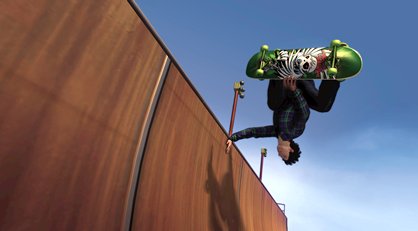
In short, if Ride’s’s hardware works as well as new dev Robomodo leads us to believe, it will provide an incomparably freer and more kinetic experience than the limited wobbling weget in the likes of Shawn White: Road Trip. Given the sheer completeness of control options, if the tech works accurately then this will certainly not be a simplified Skateboard Hero approximation. Carpets and furniture beware; living room-based 180s are coming.

By now we’re all thoroughly conditioned to the fact that “accessible” usually translates to “moronic”. But when that translation applies, we’re not usually talking about a series as intricate and noodly as Tony Hawk’s to begin with. Personally, we think it’s about time for a change from the series’ fiddly trademark button mashing, and we don’t think the implementation of the board controller should mean a dumbing down. Far from it in fact.
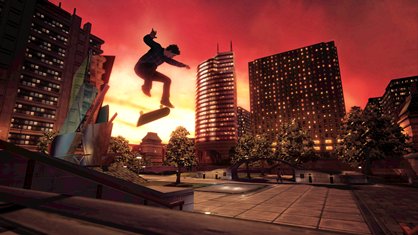
Yes, there is an easy difficulty mode which demands only approximate foot inputs - and even provides a Fable II-style glowing trail to mark out the best combo line – but the more accurate control required on higher settings should make playing this a whole new challenge for all but real-life skaters. Tony Hawk Ride looks to make control instinctive not because it’s a simplified approximation of real-world action, but because it almost is real-world action. Let’s face it; a skating game can’t get much more hardcore than asking you to actually skate.
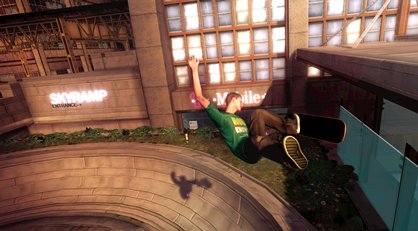
In fact, our only concern right now is that the game’s ‘real’ skating requirements could actually exclude some of the casual players it probably aims to snag. At the very least, you should already be saving up for Grandma’s replacement hip.

With the avian one’s long-awaited return, Activision appears to be giving us pro skating, SSX-style. While the series’ traditional open-plan skating plateaus are still in, they are now only one part of the overall picture, sitting alongside dedicated downhill events (both race and trick runs) and simpler, standalone halfpipes. Both look similar in structure and gameplay to SSX’s equivalents, the downhills in particular offering a familiar blend of linear (but branching) course navigation, environmental trick opportunities and monster jumps.
Sign up to the GamesRadar+ Newsletter
Weekly digests, tales from the communities you love, and more
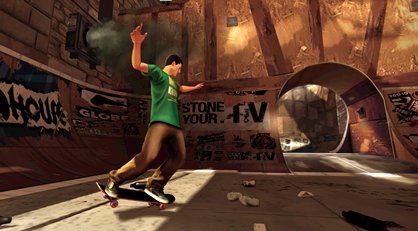
The halfpipe mode specifically requires the player to stand with the board parallel to the TV screen, presumably to make the fairly relatively locked, side-on camera angle easier to navigate and add some clarity to the timing windows for lip tricks. And to top it all off, the overhauled, lightly cartoonish art style also apes EA’s winter wonderlands, with neon trails and sparklers aplenty during big tricks.
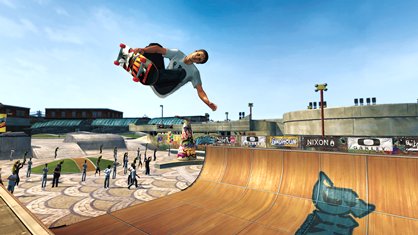
Is this a bad thing? Nah, we don’t think so. Video games are best when they heighten and emphasise real-world experiences, and we’ve always found it odd that that the Hawk series’ ludicrous airs and cloud level drop-ins don’t have more graphical zing to them. And as for the added gameplay modes, we’ll accept them gladly. The new immersion added by the board begs to be experienced in as many different ways as possible, and more options are always better than less.



